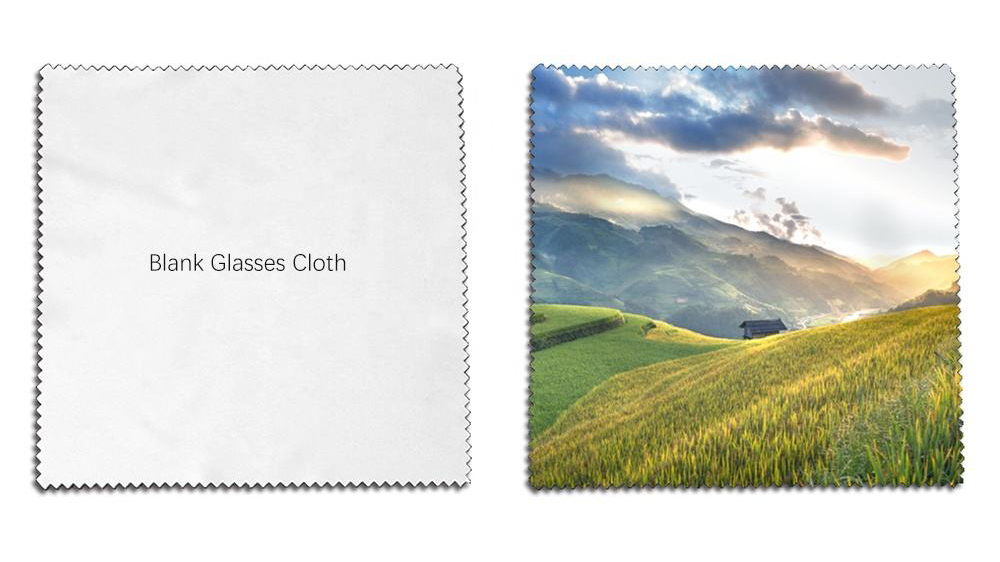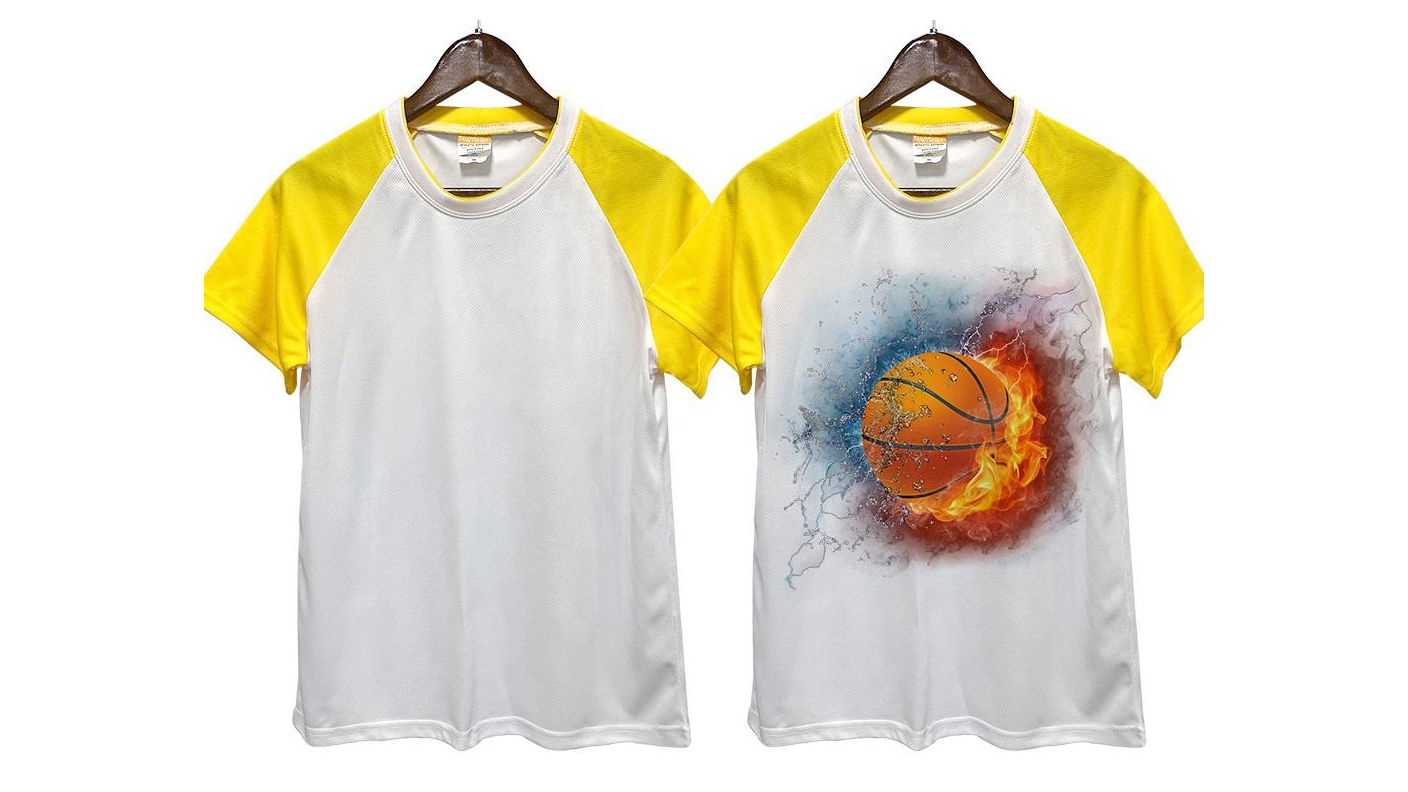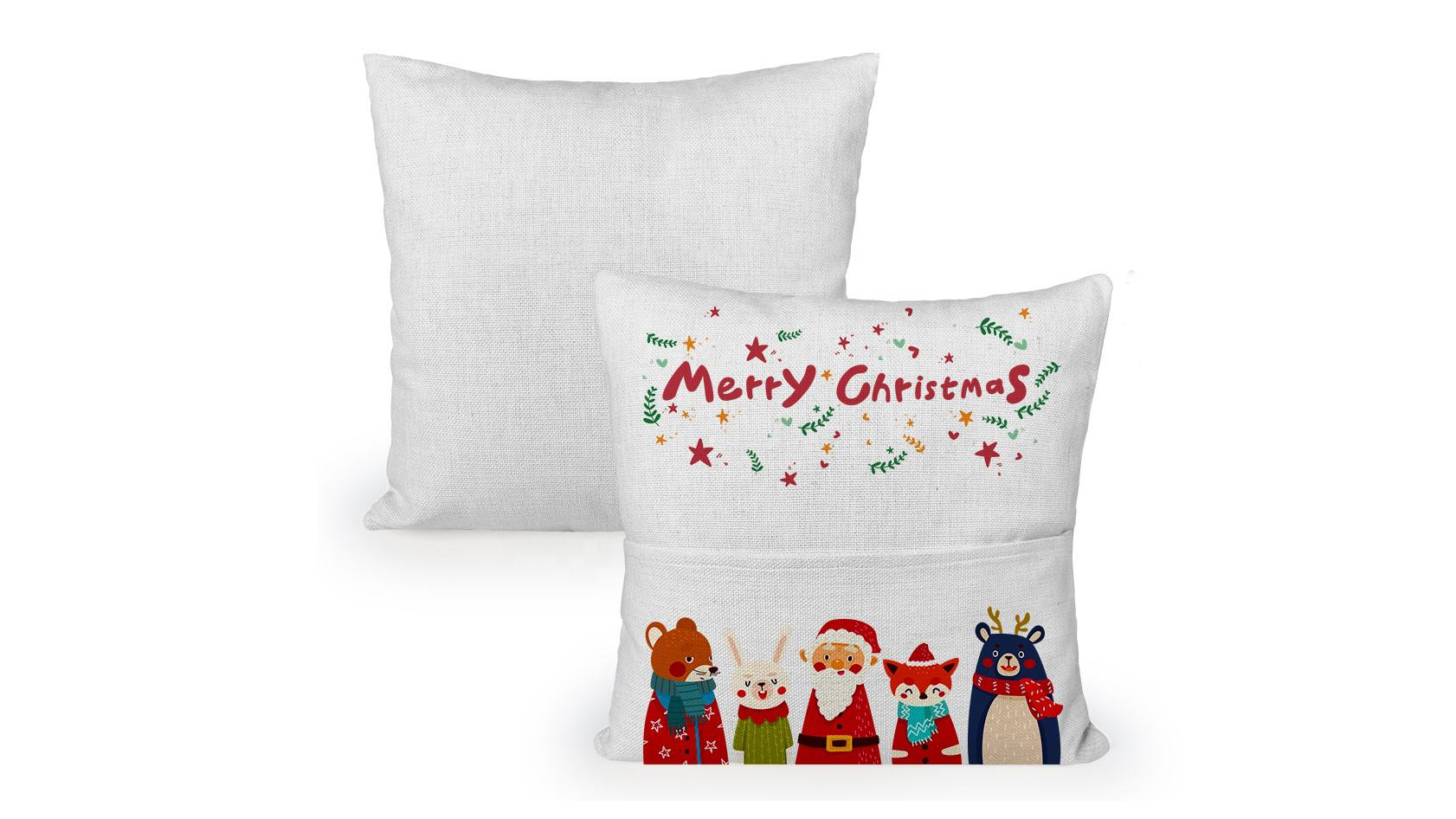
You can make bright and lasting designs for clothes, decor, and more with sublimation fabric. If you pick 100% polyester fabrics, you get the best results from dye sublimation. Many people want custom sublimation printing today, especially for sportswear, fashion, and items used to promote things. Dye sublimation lets you create custom designs that stay bright and do not fade easily. New sublimation printing makes it possible to get fast, custom products and eco-friendly choices for big brands and small businesses.
Key Takeaways
Pick 100% polyester fabric for the brightest prints. These prints last a long time and do not fade or crack easily.
Sublimation printing uses heat to change dye into gas. The color goes deep into the fabric fibers. This makes the designs soft and bright.
This printing method works well for sportswear, fashion, and home decor. It is also good for promotional items. You can fully customize your designs.
Sublimation printing is eco-friendly. It uses water-based inks and less water. This makes it a better choice for people and businesses.
Use the right heat press settings and good polyester fabrics. This helps you get sharp and strong prints. The prints stay bright after many washes.
Sublimation Fabric
What Is Sublimation Fabric
Sublimation fabric is a special material made for sublimation printing. Most of the time, it is polyester or another synthetic fiber. These fabrics have a structure that lets dye turn into gas when heated. The dye then bonds with the fibers. This is not like regular printing, where ink just sits on top. With sublimation printing, the color goes into the fabric and stays there.
Polyester is the top pick for sublimation fabric. When you heat the fibers, they open up. The dye gets inside and locks in as it cools. This makes colors bright and even for a long time. Other synthetic fibers like nylon, rayon, and acrylic can work too. But polyester gives the best results. Cotton does not work well because the dye cannot bond with its fibers. Sometimes, cotton is blended or coated to make it work for sublimation.
Note: The U.S. Digital Textile Printing Market report says polyester fabrics used in sublimation printing resist wrinkles and scratches. This makes them a great choice for things that need to look nice and last long.
Benefits of Sublimation Fabric
There are many good things about using sublimation fabric. The biggest benefit is that the prints last a long time. The dye bonds with the fibers, so colors do not fade or crack. This makes sublimation printing great for things that get washed, used a lot, or are in the sun.
Here are some main benefits of sublimation fabric:
Vibrant, Long-Lasting Colors: Dye sublimation makes bright designs that stay bold. The Dye Sublimation Printing Market report says this method keeps colors better than other types.
Soft and Comfortable Feel: The process does not add extra layers. The fabric stays soft and smooth, which is good for clothes and home items.
Full Customization: You can print any design or photo with no color limits. This makes dye-sublimation technology perfect for custom sportswear, fashion, and promo items.
Eco-Friendly Process: Sublimation printing uses water-based inks and little water. This means less waste and is better for the environment than old printing ways.
Wide Range of Uses: You can use sublimation fabric for t-shirts, jerseys, hoodies, curtains, pillowcases, bags, hats, and more. Brands like JOOS Prints and Bauldry Botanical use this for sportswear and home decor.
Science explains why sublimation fabric works so well. Dye-sublimation technology uses heat to turn dye into gas. The dye goes into the polyester fibers and bonds at a tiny level. This makes the color part of the fabric. This chemical process keeps prints sharp, even, and strong. Research shows sublimation printing works best on polyester or coated materials. You get the brightest and longest-lasting results if you use the right fabric and heat press settings.
Tip: Always pick high-quality polyester fabric for your sublimation printing. This gives you the best color, strength, and look.
Sublimation Printing Process
How Dye Sublimation Works
You can make colorful and lasting designs with the sublimation printing process. This method uses heat, pressure, and time to put your design on fabric or other things. First, you print your digital design onto sublimation transfer paper. You need a sublimation printer and sublimation ink for this. These inks are special because they turn into gas when heated. This is important for the dye sublimation process.
Here is an easy step-by-step guide to the sublimation printing process:
Print your design on sublimation transfer paper. Use a sublimation printer with sublimation ink.
Put the printed transfer paper on the fabric or item you want to decorate. Hold it in place with heat-resistant tape so it stays still.
Use a heat press to add heat and pressure. The temperature is usually between 350°F and 420°F. For the brightest colors, set the heat press from 380°F to 420°F.
The heat changes the sublimation ink into a gas. This gas goes into the fibers of the fabric at a tiny level.
When the heat press is done, let the item cool down. The gas turns back into a solid dye, now locked inside the fabric.
You get a full-color image that will not crack, fade, or peel.
Tip: Always look at the manufacturer’s instructions for the right time and pressure. Each fabric or item may need a different setting for good sublimation printing.
The sublimation printing technique gives you sharp and detailed images. You can use it for t-shirts, sportswear, banners, and more. The process has steps like printing, taping, pressing, and cooling. Each step is important for great sublimation results.
Why 100% Polyester Fabrics Are Best
You get the best results from sublimation printing on fabric when you use 100% polyester fabrics. Polyester fibers open up when heated. This lets the sublimation dye go in and bond at a tiny level. This bond makes the colors bright and the image last a long time. Dye sublimation printing on polyester gives you images that stay nice after many washes and lots of use.
High-polyester blends can work too, but the color may not be as bright as with pure polyester. If you use cotton or items without a poly-coating, the sublimation ink cannot bond well. The design may look faded or wash out fast. Cotton fibers do not open up like polyester, so the dye sits on top and does not last.
Fabric Type | Color Vibrancy | Durability | Best For Sublimation Printing |
|---|---|---|---|
100% Polyester | ⭐⭐⭐⭐⭐ | ⭐⭐⭐⭐⭐ | Yes |
High-Polyester Blends | ⭐⭐⭐⭐ | ⭐⭐⭐⭐ | Yes |
Cotton | ⭐ | ⭐ | No |
Non-Poly-Coated Items | ⭐ | ⭐ | No |
Note: For the best sublimation printing, always pick 100% polyester fabrics or items with a special polymer coating. This helps the sublimation ink bond well and keeps the image bright and strong.
Sublimation printing on fabric works best when you follow the right steps and use the right materials. You can get high-quality, long-lasting results with the right sublimation printer, sublimation ink, and polyester fabric. The dye sublimation process lets you make custom products that look great and last a long time.
Apparel Uses

Sportswear and Activewear
Sublimation printing is very common in sportswear and activewear. This way, you get bright and bold designs that last a long time. Your team colors and logos stay sharp after many washes. Polyester fabrics are best for sublimation printing because they bond with the ink. This makes prints resist fading, cracking, and peeling.
Polyester garments keep their color and shape after many washes.
Sublimation printing gives you fabrics that wick away sweat and let air in. You stay dry and comfortable when you move.
Polyester-spandex blends make your clothes stretchy and flexible. This helps your activewear fit well and keeps prints looking nice.
Special fabrics like Dri-Fit Jersey and Serena Jersey dry fast and feel soft. They also show prints very well.
Lightweight polyester (100–180 GSM) soaks up dye sublimation ink. This makes your designs stand out.
The dye goes into the fabric, not just on top. This helps your clothes last longer.
You can use sublimation printing for many sportswear styles. These include tight shirts and loose jerseys.
Wash your clothes inside out and let them air dry. This keeps the print and fabric strong.
Tip: Pick 100% polyester for the brightest and strongest sublimation printing in sportswear and activewear.
Fashion and Uniforms
Sublimation printing changes how people design fashion and uniforms. The market for dye sublimated apparel is growing fast. In 2024, it was $4.5 billion. Experts think it will reach $8.2 billion by 2033. This growth happens because people want custom clothes and cool designs. They also want high-performance garments. Dye sublimation lets you make detailed and colorful prints on polyester and synthetic blends. You can make special fashion pieces, trendy uniforms, and eco-friendly clothes with recycled polyester and water-based inks.
Designers use sublimation printing to make small batches of great clothes. You see this in sports uniforms, work clothes, and fashion collections. New technology, like AI and custom-fit patterns, helps clothes fit better and look stylish. Dye sublimation also helps the planet, so you can pick greener options for your closet or business.
When you use sublimation printing for fashion and uniforms, you get strong, comfy, and eye-catching clothes that stand out.
Decor and More

Home Textiles and Wall Art
Sublimation printing lets you make cool home textiles and wall art. You can put custom designs on pillows, blankets, curtains, and even upholstery. The colors stay bright for a long time. Many people want special home décor now. You can print family photos, art, or patterns on fabric for your living room or bedroom.
The market for home décor with sublimation printing is getting bigger. More people want custom wall art and textiles. Cities are growing, and people have more money to spend. In Asia-Pacific, fabric production was 4.81 billion meters in early 2024. The dye sublimation printing market might reach $28.98 billion by 2030. Companies are buying better machines to keep up with the need for home textiles.
Application | Key Trends | Growth Drivers |
|---|---|---|
Home Décor | Custom wall art, textiles, upholstery | Urbanization, rising incomes |
You can also use sublimation printing for banners and signs. This works for soft and hard things with polymer coatings. The images look sharp and do not fade, even in sunlight. Many people pick sublimation-printed wall art instead of wallpaper. It is easier to change and take down.
Tip: Try your fabric before printing. Polyester and blends work best for home décor.
Bags, Gifts, and Promotional Items
Sublimation printing gives you lots of choices for bags, gifts, and promo items. You can make tote bags, mugs, keychains, and more. Many businesses use this to make special products for customers. You can print logos, names, or photos on each item.
Tote bags come in many shapes and sizes. You can use them for groceries, school, or travel.
Materials include polyester, vegan leather, mesh, and nylon. Each one looks and feels different.
You can match your bag design to your brand or event. Many companies pick eco-friendly choices.
Sublimation printing also works for mugs, coasters, phone cases, and ornaments. You get prints that do not fade or wear out fast. This way, you can make gifts and keepsakes just for someone. Many people like to give custom photo mugs or plaques for special days.
Sublimation printing helps you make strong, colorful, and low-cost products. You can meet the need for custom items in many businesses.
Fabric Compatibility
Best Fabrics for Sublimation Printing
You get great results with sublimation printing if you pick the right fabric. Polyester is the best because it bonds well with sublimation ink. You can also use fabrics with 98% or 96% polyester for good color and strength. Many people like recycled polyester because it is eco-friendly and works well. Sublimation printing on recycled polyester is popular for sportswear and home décor. You can also try bamboo, satin, linen, rayon, modal, canvas, and sequin fabrics. These materials help you make bright and lasting designs.
Suitable fabrics for sublimation printing:
100% polyester
Fabrics with 98% polyester
Fabrics with 96% polyester
High-polyester blends (at least 65-70%)
Bamboo
Satin
Linen
Rayon
Modal
Canvas
Sequin
Tip: Always look at the fabric label before you start. Fabrics with more polyester give you the brightest colors.
Fabrics and Materials to Avoid
Some fabrics do not work well with sublimation printing. You should not use 100% cotton or dark fabrics. Sublimation ink does not bond with cotton fibers. If you use cotton, your images will look faded or wash out fast. Sublimation printed cotton will not last long. Dark fabrics also hide the design because the ink is see-through.
Here is a table that shows how cotton and polyester are different:
Property | Cotton | Polyester |
|---|---|---|
Moisture Regain | Good | Poor |
Thermal Protection | Good | Poor |
Smoothness | Poor | Very Good |
Lustre | Poor | Very Good |
Crease Recovery | Poor | Very Good |
Uniformity | Poor | Good |
Polyester gives you smooth, shiny, and strong prints. Cotton does not bond with sublimation ink, so you should not use it. Non-poly-coated ceramics and dark fabrics also do not work.
Tips for Best Results
You can get the best from sublimation printing by following some tips. Start by picking the right sublimation printer and sublimation ink. Use a printer made for sublimation or a converted inkjet printer. Print on the correct side of the sublimation paper and cut it to fit your design. Set your heat press to 375°F to 400°F and press for 40-75 seconds with light to medium pressure. Pre-press your fabric to get rid of moisture and wrinkles. Hold the transfer paper in place with heat-resistant tape. Always use fabrics with lots of polyester or a sublimation coating. Sublimation printing on recycled polyester gives you bright and eco-friendly results.
Keep your workspace neat and store your sublimation ink in airtight containers away from sunlight. Try new fabric blends and change your method to get the best results.
You can make bright and long-lasting designs with sublimation printing. Pick 100% polyester or blends with lots of polyester for the best colors. The market for these items is getting bigger. It was $5.42 billion in 2024 and may double by 2033. Many people want special and earth-friendly things that show who they are. You can try making your own custom items or ask an expert for help.
Benefit | Why It Matters |
|---|---|
Bright, durable prints | Colors stay strong after many washes |
Eco-friendly process | Makes less waste and helps the planet |
Personalização | Shows your style or your brand |
FAQ
What is the best fabric for sublimation printing?
You get the best results with 100% polyester fabric. Polyester lets the dye bond deep inside the fibers. This makes your prints bright and long-lasting.
Can you sublimate on cotton?
You cannot sublimate directly on cotton. The dye does not bond with cotton fibers. You need a polyester coating or a high-polyester blend for good results.
How do you care for sublimated items?
Wash your sublimated items inside out in cold water. Air dry them or use a low heat setting. This keeps your prints looking new.
What products can you make with sublimation fabric?
You can create:
T-shirts and jerseys
Pillows and blankets
Tote bags and hats
Banners and wall art
Sublimation works on many polyester-based products.

